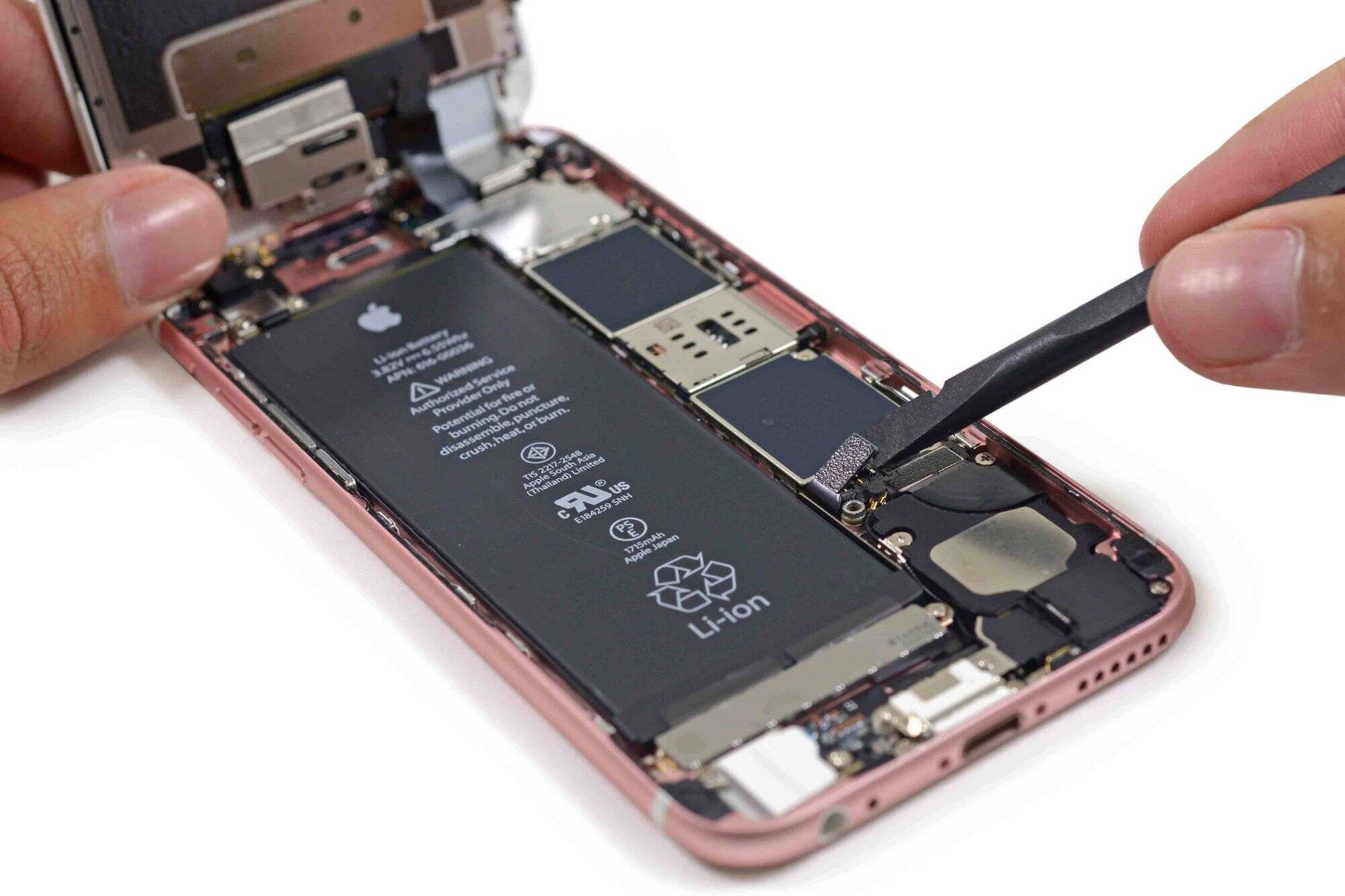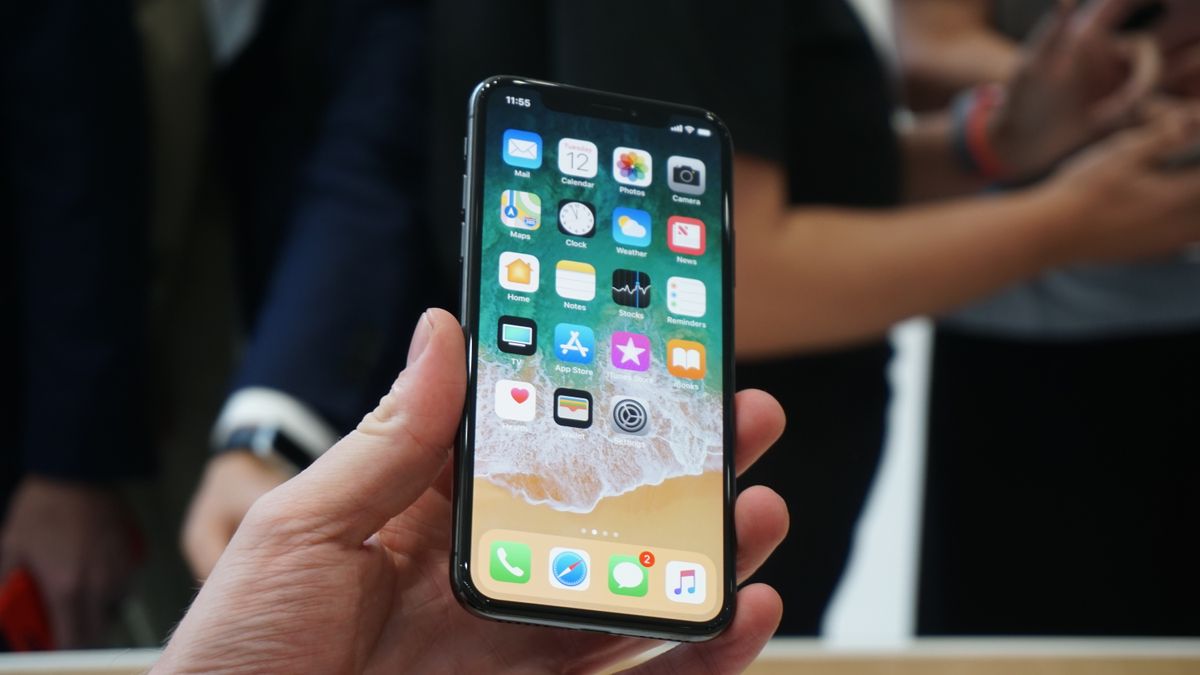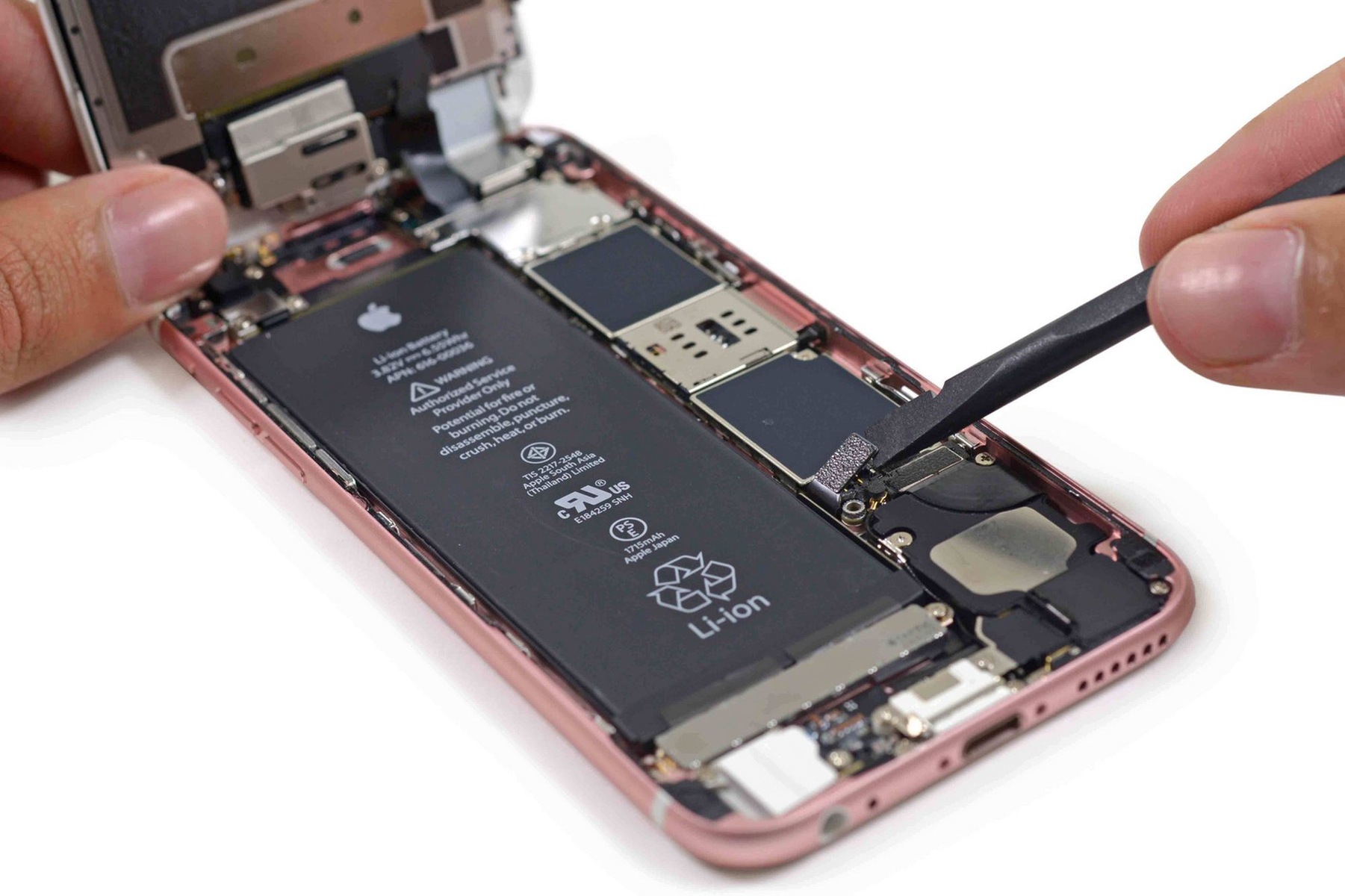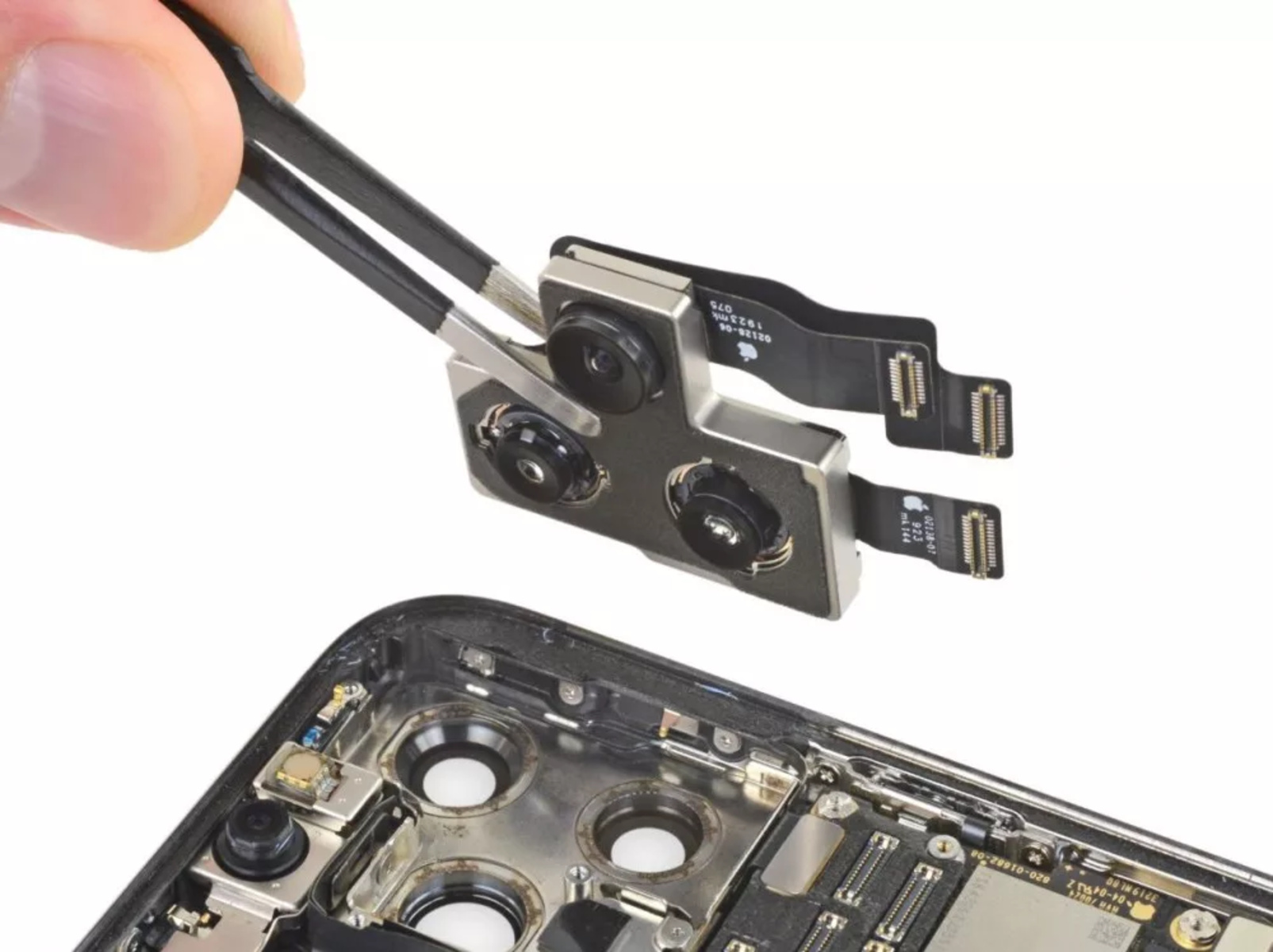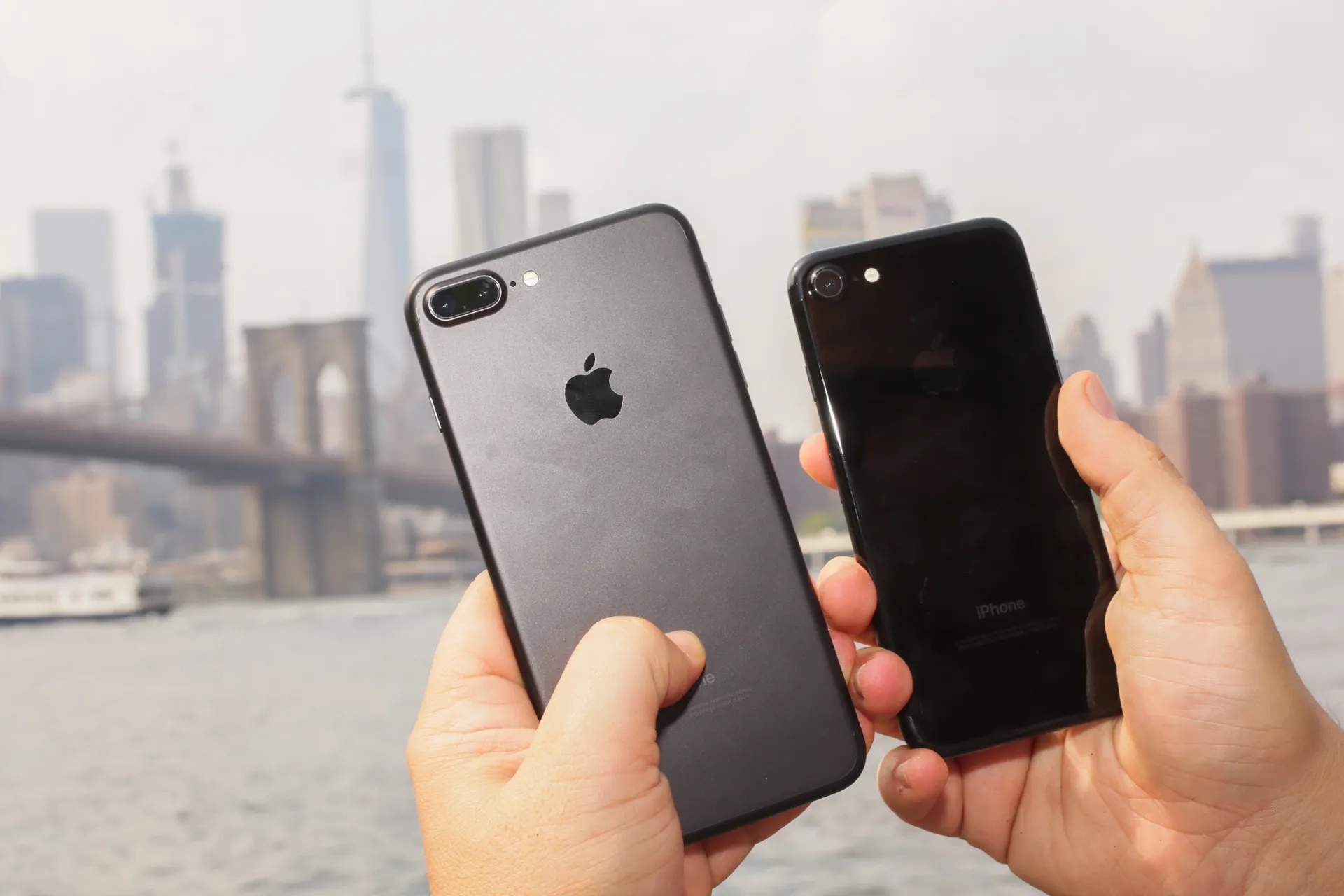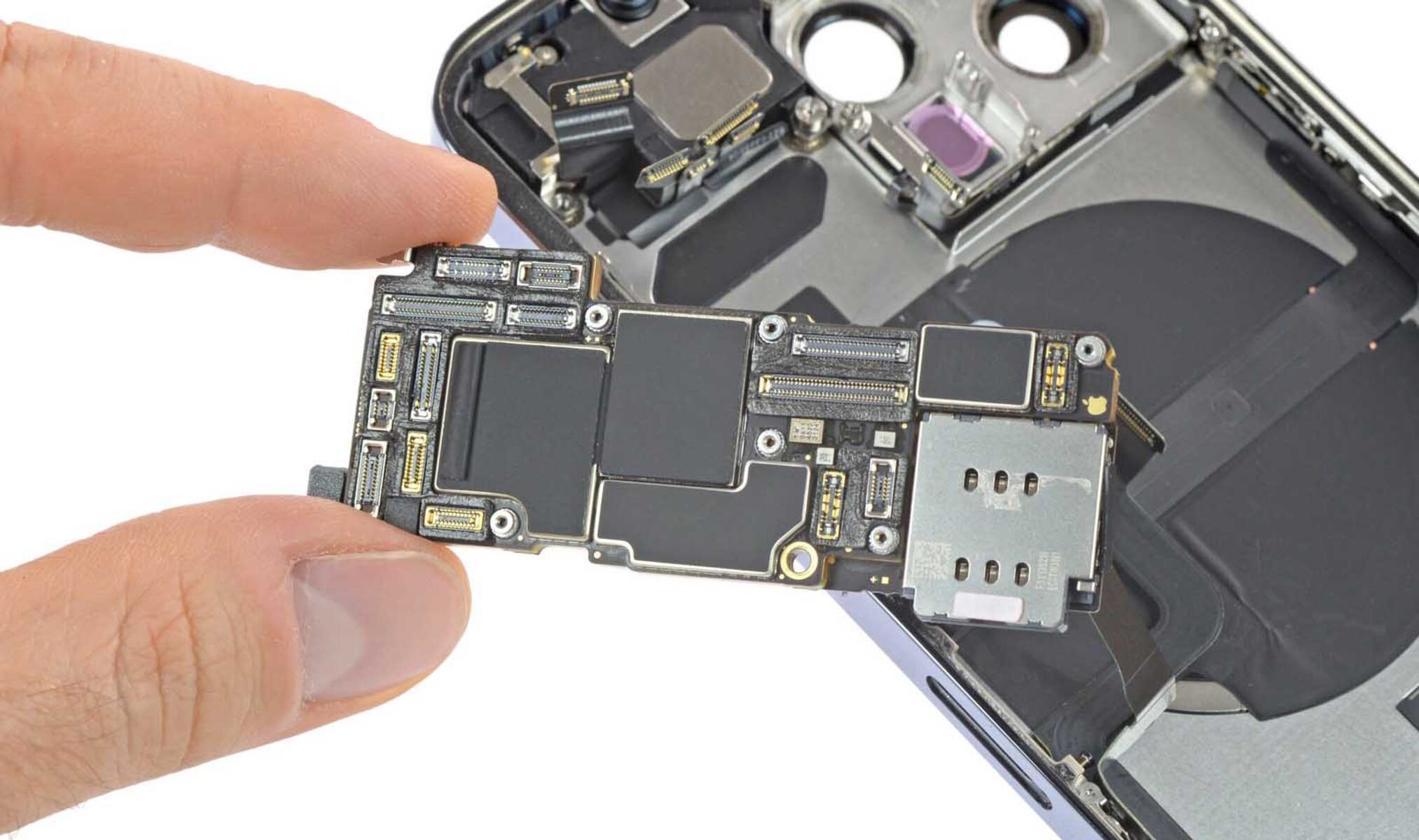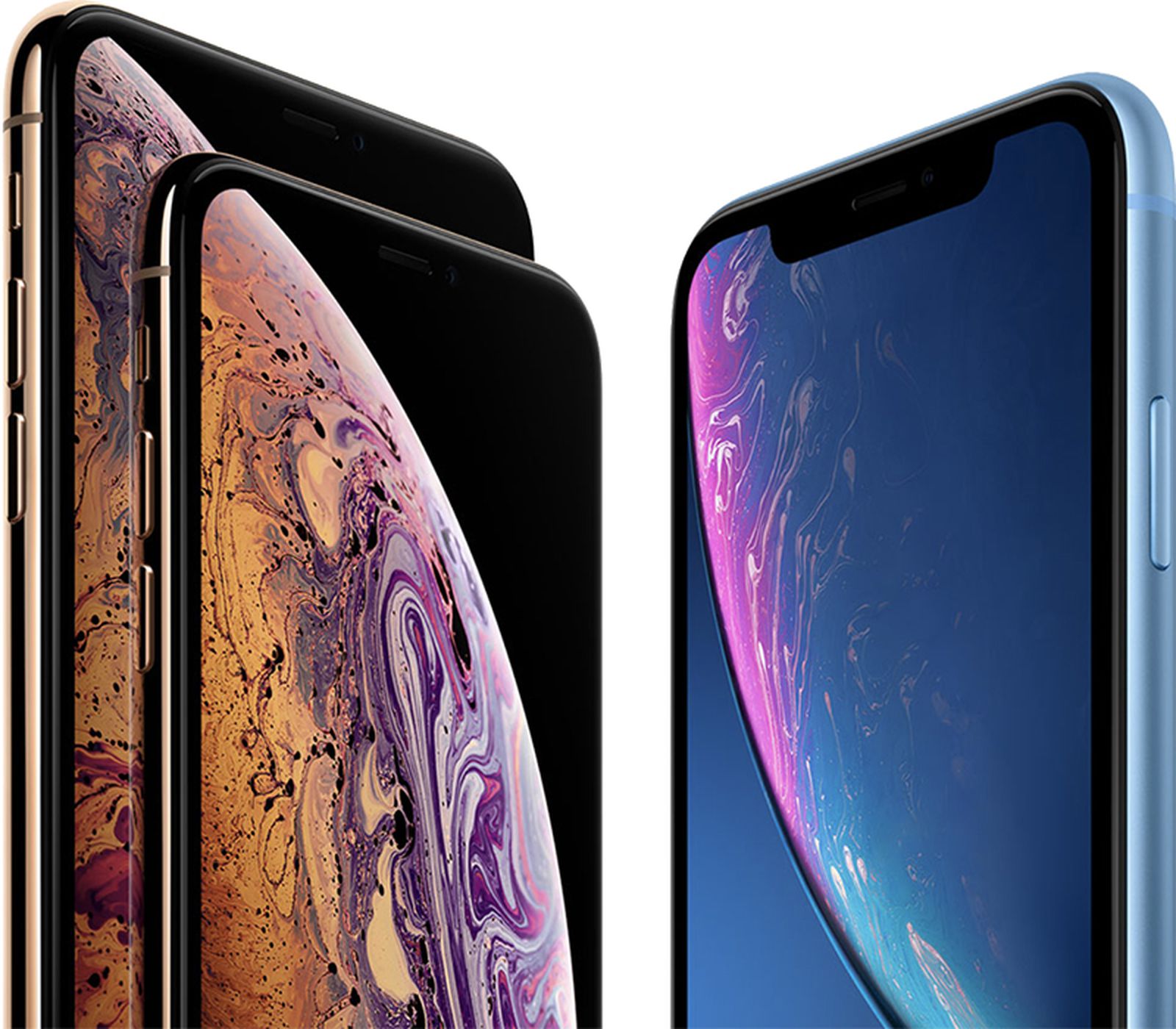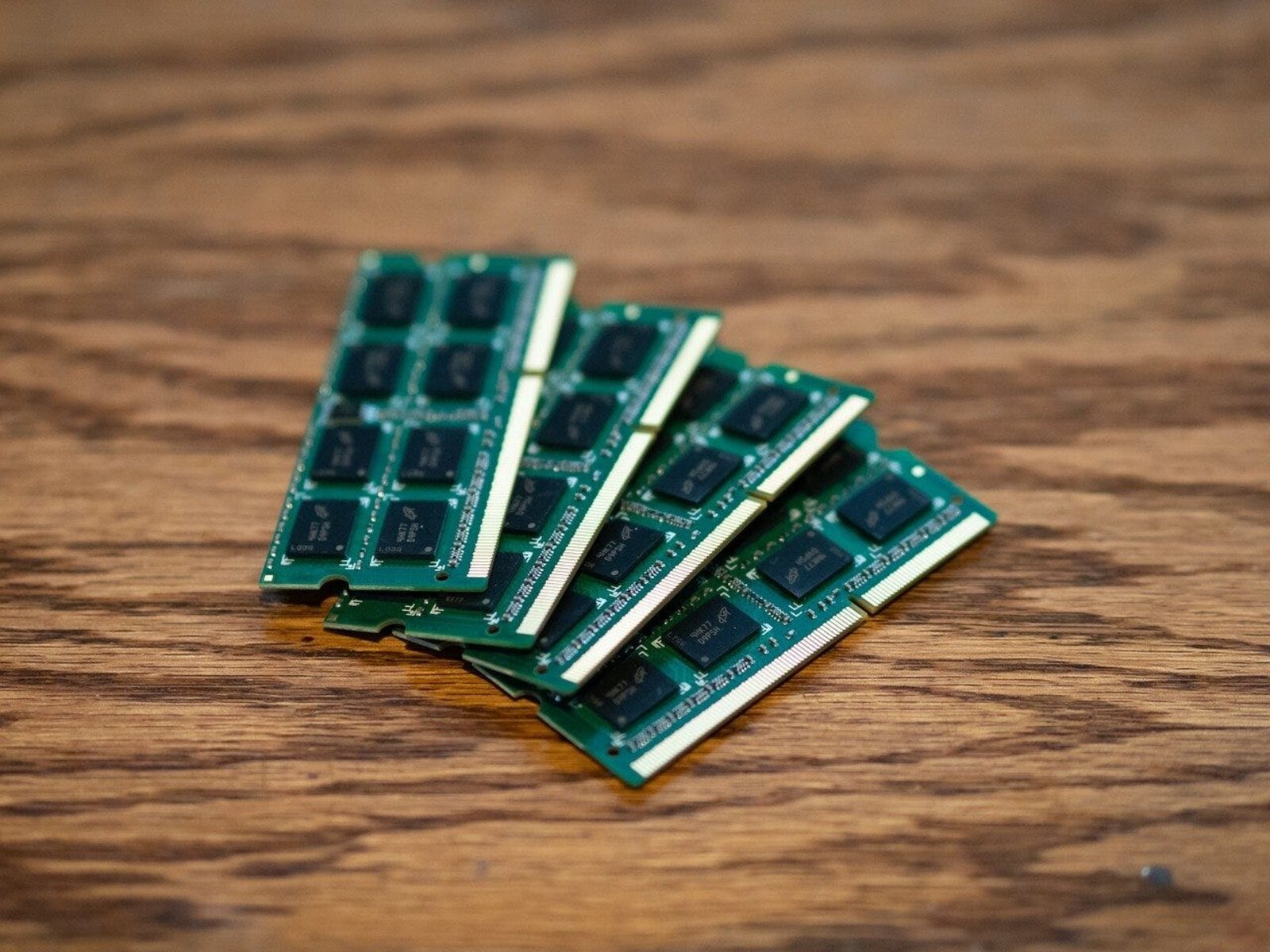Introduction
Welcome to our article on the iPhone 6 and its RAM. The iPhone 6 was released by Apple in September 2014 and quickly became one of the most popular smartphones on the market. As with any smartphone, the amount of random access memory (RAM) is a crucial factor in determining its performance.
RAM plays a vital role in a device’s ability to multitask, run apps smoothly, and handle complex processes. It is responsible for storing data that the device needs to access quickly, such as active applications and their associated data. The more RAM a device has, the more applications it can efficiently run simultaneously without experiencing a slowdown.
As the iPhone 6 was released several years ago, it is interesting to explore how its RAM compares to more recent smartphones. Additionally, we’ll discuss the importance of RAM for the overall performance of the iPhone 6 and provide recommendations for users based on their usage and expectations.
Stay with us as we dive into the specifics of the iPhone 6’s RAM capacity and its impact on the device’s performance. Whether you are a long-time user curious about your device’s capabilities or someone considering purchasing an iPhone 6, this article will help you understand how the device handles its memory management and what you can expect from it in terms of multitasking and overall performance.
RAM Explained
Before we delve into the specifics of the iPhone 6’s RAM, let’s take some time to understand what RAM is and its role in a smartphone.
Random access memory (RAM) is a type of computer memory that is used to store data that the device needs to access quickly. Unlike a phone’s internal storage, which is used for long-term data storage, RAM provides temporary storage for data that is actively being used by the device.
When you open an app on your iPhone, it gets loaded into RAM, along with any data associated with it. This allows the device to access the app and its data quickly, ensuring a smooth and responsive user experience. Without sufficient RAM, a device may struggle to run multiple apps simultaneously or handle complex tasks.
RAM operates on a principle of read and write access. It allows the device’s processor to read data from storage quickly and efficiently and also enables the processor to write data back to storage when necessary.
One of the key benefits of RAM is its speed. Compared to internal storage, RAM is much faster, allowing for quick retrieval and manipulation of data. This is crucial for multitasking, as apps need to be able to switch between each other seamlessly without causing delays or freezes.
It’s important to note that RAM is different from a device’s storage capacity. Storage capacity refers to the amount of long-term storage available for apps, files, and media. On the other hand, RAM determines how many apps and processes a device can handle at once without experiencing performance issues.
In the next section, we will explore how RAM has evolved in previous iPhone models and how it relates to the iPhone 6.
RAM in Older iPhones
As technology advances, smartphones have seen significant improvements in terms of specifications and performance. This includes the amount of RAM they have, which directly affects how well they can handle multitasking and resource-intensive processes.
When looking at older iPhone models leading up to the iPhone 6, we can see the progression in RAM capacity and its impact on device performance.
The iPhone 4, released in 2010, was equipped with 512 MB of RAM. At the time, this was considered sufficient for running apps smoothly and handling everyday tasks. However, as newer apps and updates were released, the iPhone 4’s limited RAM became a bottleneck, causing sluggishness and frequent app crashes.
The iPhone 5, launched in 2012, made a significant leap in RAM capacity, doubling it to 1 GB. This increase allowed for better multitasking capabilities and improved overall performance. Users experienced smoother app switching and fewer instances of apps being forcibly closed due to memory constraints.
With the iPhone 5s and iPhone 5c, released in 2013, Apple maintained the 1 GB RAM configuration. While this was still adequate for most users, those who used resource-intensive apps or engaged in heavy multitasking may have noticed occasional slowdowns.
The iPhone 6, which we will focus extensively on in this article, also features 1 GB of RAM. While some critics argue that Apple could have included more RAM to future-proof the device, many users found the 1 GB configuration to be sufficient for their daily needs.
It is worth mentioning that while RAM is an important factor in overall device performance, it is not the sole determinant. Apple’s optimization of hardware and software, along with the integration of their custom-designed A-series chips, plays a significant role in delivering a seamless user experience.
In the next section, we will delve into the specifics of RAM in the iPhone 6 and discuss its implications on performance and multitasking capabilities.
RAM in iPhone 6
When the iPhone 6 was released in 2014, it came with 1 GB of RAM, which was the same as its predecessor, the iPhone 5s. Although some users were hoping for an increase in RAM capacity, Apple emphasized their dedication to optimizing performance through a combination of hardware and software integration.
While 1 GB of RAM may seem relatively small compared to the RAM capacities of some Android devices at the time, Apple’s tight control over the hardware and software ecosystem allowed them to make efficient use of available resources. This optimization ensured that the iPhone 6 could deliver a smooth and responsive user experience.
The iPhone 6’s 1 GB of RAM was designed to handle the demands of typical smartphone usage, such as web browsing, social media, email, and light multitasking. It allowed users to seamlessly switch between apps, load web pages quickly, and enjoy a lag-free experience for most day-to-day tasks.
Apple’s iOS software is known for its resource management capabilities and memory efficiency. The company has a deep understanding of how to prioritize active processes and allocate resources effectively. This optimized approach, combined with the efficient use of RAM, allowed the iPhone 6 to perform admirably despite its seemingly modest RAM capacity.
However, it is important to note that the limited RAM of the iPhone 6 could occasionally lead to limitations when running more demanding apps or engaging in heavy multitasking. Users who frequently switch between resource-intensive apps or have many apps running in the background may experience occasional delays or app refreshes as the device manages its available resources.
Overall, while the iPhone 6’s 1 GB of RAM may not have been groundbreaking at the time, it was well-optimized and suited for most users’ needs. Apple’s emphasis on balance between hardware, software, and optimization allowed the device to deliver a smooth and reliable performance.
Next, we will explore the importance of RAM in the iPhone 6 and discuss how it impacts the device’s overall performance and user experience.
Importance of RAM in iPhone 6
RAM plays a crucial role in determining the overall performance and user experience of a smartphone like the iPhone 6. While the iPhone 6 came with 1 GB of RAM, an amount considered modest by today’s standards, it still held significant importance for the device’s functionality.
One of the key advantages of having sufficient RAM is the ability to multitask smoothly. With more RAM, the iPhone 6 could handle multiple apps running simultaneously without experiencing performance issues. Users could switch between apps seamlessly, keeping multiple processes active in the background while maintaining a responsive interface.
In addition, having enough RAM is vital for handling resource-intensive tasks and applications. When running demanding apps or large files, such as video editing or graphic-intensive games, having adequate RAM ensures a smooth and lag-free experience. It allows the device to load and process the data quickly, minimizing delays and preserving the quality of the user experience.
RAM also plays a role in app performance. When an app is launched, it gets loaded into RAM to ensure quick access to its data. More RAM means that the iPhone 6 can store more apps and their associated data simultaneously, reducing the need to reload apps frequently. This improves app startup times and overall responsiveness, enhancing the user’s satisfaction and productivity.
Furthermore, RAM is essential for effective web browsing. It enables the device to store web pages and their resources, such as images and scripts, while they are being accessed. As a result, revisiting recently viewed web pages becomes faster and smoother, enhancing the browsing experience.
While the iPhone 6’s 1 GB of RAM may not match the capacities of some high-end Android devices, Apple’s tight integration of hardware and software maximizes the efficiency of this memory space. Apple’s iOS is known for its excellent memory management, making the most out of the available RAM and delivering optimal performance.
However, it is important to note that as technology advances and app requirements become more demanding, having more RAM becomes increasingly desirable. Users who heavily rely on resource-intensive apps or engage in heavy multitasking may benefit from devices with higher RAM capacities.
In the next section, we will uncover the specific RAM capacity of the iPhone 6 and compare it to some of its competitors on the market at the time.
How Much RAM Does iPhone 6 Have?
The iPhone 6, released in 2014, comes with 1 GB of RAM. While this might seem low compared to some other smartphones on the market, it is important to remember that Apple’s iOS operating system is highly optimized and efficient in managing resources.
Apple’s approach to hardware and software integration allows them to make the most out of the available 1 GB of RAM in the iPhone 6. By focusing on optimization and prioritizing active processes, they ensure a smooth and responsive user experience despite the seemingly lower RAM capacity.
It’s worth noting that iOS is designed in a way that minimizes the need for excessive RAM usage. The operating system is known for its efficient memory management, ensuring that apps use resources only when necessary and freeing up RAM when it’s not in use. This optimization allows the iPhone 6 to perform well with its 1 GB of RAM.
While the iPhone 6’s RAM capacity may not match the higher numbers found in some Android devices, it doesn’t necessarily mean that it’s inferior in terms of performance. The efficiency and optimization of iOS, combined with the device’s hardware capabilities, allow the iPhone 6 to deliver a smooth and reliable user experience for everyday tasks and most applications.
However, it is important to acknowledge that the limited RAM capacity of the iPhone 6 may pose some limitations for resource-intensive tasks and heavy multitasking. Users who frequently engage in demanding workflows or use memory-hungry applications may experience occasional slowdowns or app refreshes as the device manages its available resources.
It’s also worth considering personal usage habits and preferences when evaluating the RAM capacity of the iPhone 6. For users who primarily use their device for web browsing, social media, email, and light multitasking, the 1 GB of RAM is typically sufficient to provide a satisfactory user experience.
In the next section, we will compare the iPhone 6’s RAM with some of its competitors at the time and evaluate how it stands up in terms of performance and multitasking capabilities.
Performance of iPhone 6 with 1GB RAM
Despite its seemingly modest 1GB of RAM, the iPhone 6 manages to deliver impressive performance, thanks to Apple’s optimization and integration of hardware and software.
The iPhone 6’s 1GB of RAM may not match the higher RAM capacities seen in some Android devices, but it is important to note that Apple’s iOS is highly efficient in managing resources. The operating system is designed to prioritize active processes and allocate resources effectively, ensuring that the device performs smoothly for most day-to-day tasks.
For everyday usage patterns such as web browsing, email, social media, and light multitasking, the iPhone 6 with 1GB of RAM provides a seamless and responsive user experience. Apps launch quickly, switching between them is smooth, and overall performance is reliable.
Apple’s optimization of both hardware and software components plays a significant role in the iPhone 6’s performance. The custom-designed A-series chip and iOS work together to minimize the strain on memory, ensuring that the available 1GB is used efficiently. This level of optimization allows the iPhone 6 to deliver excellent performance, even with minimal RAM compared to some competitors.
However, it’s important to note that the limited RAM might pose some limitations for more resource-intensive tasks and heavy multitasking. Engaging in memory-intensive activities, such as video editing or running several demanding apps simultaneously, may cause occasional delays or app refreshes as the device manages its resources.
Users who heavily rely on high-performance apps or engage in intense multitasking should consider upgrading to devices with higher RAM capacities. While the iPhone 6 with 1GB of RAM can handle most tasks efficiently, it may struggle to keep up with the demands of more advanced users or those with specific needs that require a higher memory footprint.
Overall, the iPhone 6’s performance with 1GB of RAM is commendable and showcases Apple’s optimization capabilities. The combination of hardware and software integration, along with the efficiency of iOS, allows the device to provide a smooth and reliable user experience for the majority of users.
In the next section, we will compare the RAM capacity of the iPhone 6 to some of its competitors at the time to provide a broader perspective on its performance capabilities.
Comparison of iPhone 6 RAM with Competitors
When comparing the RAM capacity of the iPhone 6 with its competitors at the time, it becomes clear that Apple opted for a more conservative approach with its 1GB of RAM. This decision may have raised eyebrows, as some Android devices boasted higher RAM capacities.
Android smartphones released around the same time as the iPhone 6 often featured 2GB or even 3GB of RAM. This larger RAM capacity theoretically provides more headroom for multitasking and resource-intensive tasks.
However, it is essential to consider more than just the raw numbers when evaluating performance. Apple’s tight integration of hardware and software, coupled with their efficient optimization, means that the iPhone 6 with 1GB of RAM can perform admirably for most day-to-day tasks.
While Android devices with larger RAM capacities may have an advantage in terms of raw multitasking capabilities or running memory-intensive applications, the iPhone 6’s performance is optimized to make the most out of its available resources.
It is also worth mentioning that comparing RAM capacities alone does not provide a complete assessment of a device’s performance. Factors such as processor speed, software optimization, and app ecosystem all contribute to the overall user experience.
Apple’s iOS operating system is known for its efficient memory management, maximizing the functionality of the available RAM in the iPhone 6. This integration allows for smooth app launches, quick task switching, and overall responsiveness, despite the device’s seemingly low 1GB RAM capacity.
In the end, the importance of RAM capacity may vary depending on individual usage patterns and specific needs. For users who prioritize day-to-day tasks, media consumption, and light multitasking, the iPhone 6’s 1GB of RAM proves sufficient.
However, power users or those who engage in heavy multitasking, resource-intensive applications, or gaming may want to consider devices with larger RAM capacities to ensure a seamless experience.
It is essential to analyze the performance characteristics and user experiences of a device holistically, taking into account factors beyond RAM capacity alone.
In the following section, we will provide recommendations and considerations for iPhone 6 users based on their specific usage requirements and expectations.
Recommendations for iPhone 6 Users
If you are an iPhone 6 user, there are several considerations and recommendations to optimize your experience with the device:
1. Regularly close unused apps:
While the iPhone 6 can handle multiple apps running simultaneously, it’s always a good practice to close apps that you are not actively using. This helps free up RAM and ensures optimal performance for the apps you are using.
2. Limit heavy multitasking:
Heavy multitasking, especially with resource-intensive apps, can strain the limited 1GB RAM of the iPhone 6. Consider prioritizing the apps or tasks that are most important and close unnecessary ones to maintain a smooth user experience.
3. Keep the software up to date:
Apple regularly releases software updates that improve performance and address bugs. Keeping your iPhone 6 updated with the latest iOS version can help optimize resource management and enhance overall performance.
4. Optimize app settings:
Some apps may have settings that allow you to adjust their resource usage. Explore the settings of your frequently used apps and consider adjusting options like background refresh, push notifications, or app-specific settings to conserve resources.
5. Clear cache and data:
The cache and temporary files accumulated by apps can take up unnecessary storage and potentially impact performance. Periodically clearing the cache and data of apps, especially those that consume a lot of resources, can help maintain a smooth user experience.
6. Manage storage space:
Although RAM and storage are different, having sufficient available storage is crucial for the overall performance of your iPhone 6. Regularly delete unnecessary files, apps, and media to free up space and optimize device performance.
7. Consider upgrading:
If you find that the performance of your iPhone 6 is consistently inadequate for your needs, it might be worth considering an upgrade to a newer iPhone model with higher RAM capacity. Newer devices have advanced hardware and software optimizations that enhance multitasking and performance.
Remember, the iPhone 6 with its 1GB RAM can still provide a satisfactory user experience for most tasks. Implementing these recommendations can help you maximize the device’s capabilities and ensure a smooth and responsive performance.
In the end, the suitability of the iPhone 6 will depend on your personal usage habits and expectations. Assess your requirements and consider these recommendations to make the most out of your iPhone 6.







